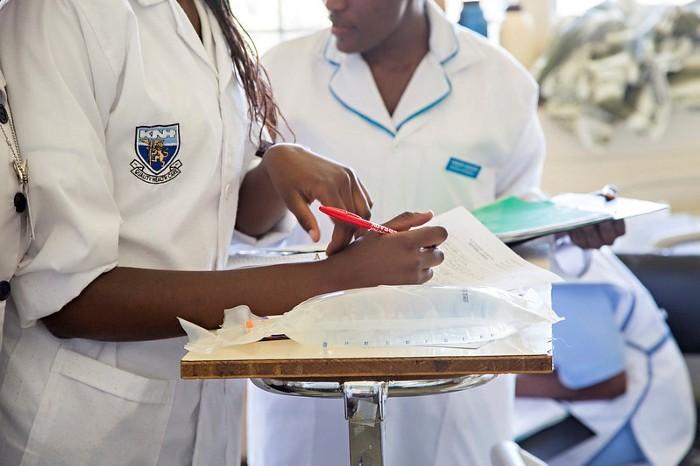Blog
Corruption in the health sector: current strategies and recommendations for donors

Corruption in the health sector can be a matter of life and death. It affects all five dimensions of health system performance: access, quality, equity, efficiency, and the effectiveness of health services. Corruption also causes the loss of an estimated US$500 billion in public health spending every year. This is more than the cost of the Sustainable Development Goal (SDG) commitment to achieve universal health coverage.
A recent U4 Issue highlights that to address these challenges, donors should support long-term, strategic approaches to build health sector integrity. Such approaches should be based on a sound understanding of dynamics in the sector and the roles of different health stakeholders.
Why the health sector?
Health systems are particularly susceptible to corruption because of they contain the following features:
- large amounts of resources – spending on health is high and on the rise;
- uncertainty – in terms of who will get ill, with what illness, and the effectiveness of treatments;
- information asymmetry – between patients and health service providers, between doctors and drugs companies, for example;
- the large number and wide distribution of actors;
- the complexity and fragmentation of national health systems; and
- the globalised nature of the supply chain for drugs and medical devices.
Different health systems are at risk of different types of corruption. However, all systems are prone to state and policy capture, a form of systemic corruption whereby private interests strongly influence government decision-making. Most systems are also at risk of corruption in the drug supply chain, procurement, and in appointments.
Meanwhile, at the service delivery level, cultural differences in what is considered acceptable or unacceptable behaviour require context-specific understanding.
Designing mitigation strategies
Various instruments can help to diagnose problems of corruption in the health sector. Tools can also be used to generate buy-in among stakeholders for anti-corruption measures. Assessment tools focus on experiences or perceptions of corruption, comprehensive sector assessments, specific sectoral risks, or health sector governance. Some mechanisms focus on certain sub-sectors, such as medical drugs or human resources.
However, few of these tools assess high-level corruption, involving leading hospital managers, health authorities, ministers or state capture. In practice, therefore, a combination of different strategies will be useful. Donor support is also essential in designing effective mitigation interventions.
In addition, the imperative to save lives may impede frank discussions among government actors and development partners. Hence, Identifying and punishing corrupt practices in health remains difficult.
Current situation of anti-corruption in health
Many countries have made efforts to address corruption and unethical behaviour in their health systems. The initiatives tend to be targeted at either:
- problems – eg, informal payments / absenteeism / or overbilling;
- processes – eg, drug procurement / health workforce management; or
- institutions – eg, health centres and hospitals.
However, such interventions are usually deployed in limited geographic areas and over restricted time periods. Generally, more holistic, strategic, and medium- to long-term initiatives are rare.
Nonetheless, a number of international initiatives have been created for the pharmaceutical sub-sector, to enable health-related procurement – for example, the Open Contracting Partnership and Open Contracting for Health. At the same time, specific risk areas, such as of transparency in drug pricing and clinical trials, have received attention in terms of policy guidance.
As part of the international development agenda, all UN member states have committed to achieve universal health coverage as part of the Sustainable Development Goals (SDGs) by 2030. At the international level, therefore, there is an opportunity for donors to link the three Sustainable Development Goals that contain commitments to addressing health sector corruption to sector strengthening initiatives: goals 3 (‘Ensure healthy lives and promote well-being’), 16 (Build effective, accountable, and inclusive institutions’), and 17 (‘Revitalise the global partnership for sustainable development’).
When deploying these various tools, it is important for practitioners to bear in mind that reducing corruption and promoting good governance should not be seen as ends in themselves. Rather, they are a means to achieve sector goals.
Problems with current strategies
There are a number of gaps in – and criticisms of – the tools used to address corruption in the health sector. First, they are often inflexible, focusing on rules and procedures that practitioners assume will prevent corrupt practices. They also often pay insufficient attention to management systems and practices that prioritise principles of transparency, accountability, and participation. Moreover, such strategies may not adequately capture the complex dynamics that lead to specific corrupt behaviours.
Another issue is that not much attention has been paid to interventions that can have an impact on corruption at the highest levels in the health sector. These include approaches such as monitoring senior health sector officials’ assets and interests – both in-country and internationally.
Additionally, there is a surprising lack of documented evidence on initiatives that analyse and address capture of health regulatory agencies, specific health sector oversight agencies, drug price commissions, and similar bodies.
Likewise, and crucially, documented evidence on the outcomes of health anti-corruption strategies is patchy. The impacts of such interventions are mostly unknown.
In spite of these shortfalls, social accountability tools (eg, informing people of their rights, teaching people how to lodge complaints), show promise for reducing corruption in health service delivery.
Recommendations for donors
If donors are to deepen their commitment to addressing corruption in the health sector, it is important for them to develop long-term, strategic approaches. These must be based on a sound understanding of dynamics in the sector and the different actors’ roles.
At the international level, donors should consider the following:
- establishing linkages between the health SDGs with the good-governance SDGs;
- supporting multi-stakeholder initiatives to address corruption in health;
- supporting continuous research and learning on corruption and anti-corruption in health systems;
- working with vertical (disease-specific) programmes to complement the current focus on fraud control, with a health system strengthening approach to increase integrity; and
- strengthening civil society initiatives.
At the national level, donors should consider the following:
- Information and knowledge generation: Supporting multi-disciplinary diagnostics of corruption, while fostering external monitoring and oversight.
- Health strategy and policy: Ensuring integration of anti-corruption into health policies and plans. Also, supporting sector transparency strategies, and government–donor dialogue around corruption in health.
- Targeted reforms and measures: Strengthening regulatory and institutional integrity, and building bridges between the health and anti-corruption ‘communities’.
- Non-state actors (civil society, academia, the private sector): Strengthening social control and advocacy for integrity in health, and piloting national multi-stakeholder initiatives. Also, supporting integrity in professional associations, along with support for teaching and research on corruption and integrity in health.
Actions for development partners themselves
The U4 Issue also provides recommended actions for development partners to help address corruption in the health sector. The first is that they should foster cooperation between health and governance teams/advisers. A key tool in this respect is incorporating a corruption and integrity lens in new health programmes.
Health advisers should be able to identify ‘red flags’ – that is, spot and react appropriately to incidents of corruption. They should also apply a ‘whole-of-government’ approach to corruption in the health sector. Examples of this include them supporting criminal investigation of corruption allegations against high-level health sector officials.
Finally, the authors recommend donor coordination on corruption in health, for example, through a health sector coordinating group. This might include the contracting of a specific anti-corruption and integrity expert for the health sector.
Read more in Health sector corruption. Practical recommendations for donors (U4 Issue 2020:10)
Disclaimer
All views in this text are the author(s)’, and may differ from the U4 partner agencies’ policies.
This work is licenced under a Creative Commons Attribution-NonCommercial-NoDerivatives 4.0 International licence (CC BY-NC-ND 4.0)


